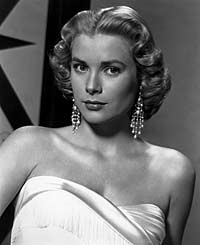When housing prices seemed like they’d never stop climbing, developers were using architects’ names as selling points—but now they’re finding that Hollywood, and royalty, lend a dependable air of glamour even in a down market. So when Brett Buehrer and Jeremiah O’Connor recently completed a litigation-strewn, rental-to-condominium conversion of Manhattan House, a Modernist apartment block on New York City’s chichi Upper East Side, they settled on marketing the building not as a masterpiece designed by Gordon Bunshaft but as the onetime home of Grace Kelly.


Photo © James Murdock (top); courtesy Rubenstein Public Relations (above); courtesy Rubenstein Public Relations (right).
Former celebrity occupants are starring in sales pitches nationwide. Sotheby’s agent Jean Merkelbach, for instance, is asking $32.5 million for a 20,000-square-foot compound that casino magnate William Harrah built in the 1960s on the Nevada shores of Lake Tahoe. The eight-bedroom, 11-bath “villa” now includes a negative-edge pool and heated driveway, but the celebrities who once crashed there—Frank Sinatra! Dean Martin! Tony Orlando!—still populate marketing materials. In Hollywood, meanwhile, some brokers specialize in selling houses owned by stars as hoary as Douglas Fairbanks.
But in the case of Manhattan House, the old movie idol is outshining a high-powered Modernist heritage. The 1950 design by Skidmore, Owings & Merrill’s Bunshaft and Mayer & Whittlesey stands as New York’s most extensive effort to apply Le Corbusier’s doctrines about vertical living to a luxury building. Unlike other white-brick buildings of the same era, it has been spared the indignity of receiving a glass facelift because the city declared it a landmark in 2007; and unlike other condo conversions, it went through a whipsaw of suits and buyouts that left tenants angry and publicity bleak.
 |
So developers used Kelly’s connections—a short residency and a family business that laid the building’s original bricks—as the foundation for a new image. (Bunshaft lived there too, but nobody’s talking about that.) “When built in 1952 it had the proportion and space of prewar buildings and the light and amenities of a new one,” Buehrer asserts. “A purchaser comes into Manhattan House and they sense quality.” He’d certainly hope so. After a $150 million outlay on upgrades alone, the owners have more than 500 apartments to sell and are asking as much as $14 million apiece.




Post a comment to this article
Report Abusive Comment